
Trebinje: The Gem of Herzegovina
Discover Trebinje, a serene blend of history, nature, and culture in southern Bosnia and Herzegovina. Explore its ancient streets, scenic landscapes, and vibrant wine scene.
Nestled in the southern region of Bosnia and Herzegovina, Trebinje is a city that enchants visitors with its rich history, stunning architecture, and picturesque landscapes. Often referred to as the 'City of Sun and Platan Trees,' Trebinje offers a unique blend of Mediterranean and continental influences that make it a standout destination in the Balkans. Trebinje's Old Town, known as 'Kastel,' is a labyrinth of cobblestone streets, historic buildings, and charming cafes. Here, you can wander through centuries-old streets, visit the beautiful Arslanagić Bridge, and explore the local market where artisans sell handmade crafts and local produce. The town's atmosphere is serene, making it a perfect spot for leisurely strolls and cultural immersion. Nature lovers will find plenty to adore in Trebinje. The city is surrounded by lush hills and the Trebišnjica River, one of the longest sinking rivers in the world. Outdoor activities such as hiking, biking, and river rafting are popular among both locals and tourists. Don't miss the chance to visit the Vjetrenica Cave, one of the most significant karst caves in Europe, located just a short drive from the city. Wine enthusiasts will be delighted to discover Trebinje's burgeoning wine scene. The region's vineyards produce some of the finest wines in Bosnia and Herzegovina. Many local wineries offer tours and tastings, giving you the opportunity to savor the flavors of Herzegovina's terroir. Pair your wine with traditional Herzegovinian cuisine at one of the city's many restaurants for a truly unforgettable dining experience. Trebinje is not only about history and nature; it also boasts a vibrant cultural scene. The city hosts various festivals throughout the year, including the Trebinje Summer Festival, which features music, theater, and art performances. Whether you're a history buff, nature enthusiast, or wine lover, Trebinje offers something for everyone.
Local tips in Trebinje
- Visit the local market early in the morning for the freshest produce and unique handmade crafts.
- Wear comfortable shoes for exploring the cobblestone streets of the Old Town.
- Take a guided tour of the Vjetrenica Cave to fully appreciate its geological wonders.
- Sample local wines at the family-owned wineries around Trebinje.
- Attend the Trebinje Summer Festival to experience the local cultural scene.
- Carry a reusable water bottle; Trebinje has many public fountains with clean drinking water.
Trebinje: The Gem of Herzegovina
Nestled in the southern region of Bosnia and Herzegovina, Trebinje is a city that enchants visitors with its rich history, stunning architecture, and picturesque landscapes. Often referred to as the 'City of Sun and Platan Trees,' Trebinje offers a unique blend of Mediterranean and continental influences that make it a standout destination in the Balkans. Trebinje's Old Town, known as 'Kastel,' is a labyrinth of cobblestone streets, historic buildings, and charming cafes. Here, you can wander through centuries-old streets, visit the beautiful Arslanagić Bridge, and explore the local market where artisans sell handmade crafts and local produce. The town's atmosphere is serene, making it a perfect spot for leisurely strolls and cultural immersion. Nature lovers will find plenty to adore in Trebinje. The city is surrounded by lush hills and the Trebišnjica River, one of the longest sinking rivers in the world. Outdoor activities such as hiking, biking, and river rafting are popular among both locals and tourists. Don't miss the chance to visit the Vjetrenica Cave, one of the most significant karst caves in Europe, located just a short drive from the city. Wine enthusiasts will be delighted to discover Trebinje's burgeoning wine scene. The region's vineyards produce some of the finest wines in Bosnia and Herzegovina. Many local wineries offer tours and tastings, giving you the opportunity to savor the flavors of Herzegovina's terroir. Pair your wine with traditional Herzegovinian cuisine at one of the city's many restaurants for a truly unforgettable dining experience. Trebinje is not only about history and nature; it also boasts a vibrant cultural scene. The city hosts various festivals throughout the year, including the Trebinje Summer Festival, which features music, theater, and art performances. Whether you're a history buff, nature enthusiast, or wine lover, Trebinje offers something for everyone.
When is the best time to go to Trebinje?
Iconic landmarks you can’t miss
Hercegovačka Gračanica Temple
Explore the breathtaking Hercegovačka Gračanica Temple in Trebinje, a magnificent Orthodox church steeped in history and surrounded by stunning landscapes.

Grad Sunca - Water and Dino park
Experience unforgettable fun at Grad Sunca in Trebinje, where thrilling water rides meet a playful dinosaur adventure perfect for families.

Arslanagić Bridge
Experience the enchanting Arslanagić Bridge in Trebinje, a historical landmark where Ottoman architecture meets breathtaking natural beauty.

Hotel Platani
Experience the charm of Trebinje at Hotel Platani, where comfort meets local hospitality in a picturesque setting for an unforgettable stay.

Хотел Леотар
Experience the perfect blend of comfort and local culture at Hotel Leotar, your gateway to the beautiful city of Trebinje.

Vinarija Vukoje
Experience the rich flavors of Trebinje at Vinarija Vukoje, a premier wine bar and restaurant offering exquisite local wines and gourmet cuisine.

Bazen Bregovi
Discover Bazen Bregovi in Trebinje: the ultimate swimming facility for relaxation, family fun, and refreshing escapes in beautiful Bosnia.

Dučić’s View
Experience exquisite dining with stunning views at Dučić's View in Trebinje, where every meal becomes a memorable adventure.

Anđelkina kapija
Experience the historical charm and natural beauty of Anđelkina Kapija, a must-visit tourist attraction in Trebinje, Bosnia and Herzegovina.

Ресторан Рас Требиње
Experience the best of Bosnian cuisine at Restaurant Ras in Trebinje, where traditional flavors meet modern dining in a warm and inviting setting.

Kulturni centar Trebinje
Discover the artistic heart of Trebinje at Kulturni Centar, where culture, cinema, and performance come alive in a vibrant community setting.

Underground
Discover the vibrant nightlife of Trebinje at Underground, where live rock music and electrifying performances create unforgettable moments.

Herzegovina Museum
Explore the rich heritage of Herzegovina at the Herzegovina Museum in Trebinje, showcasing historical artifacts and stunning art.
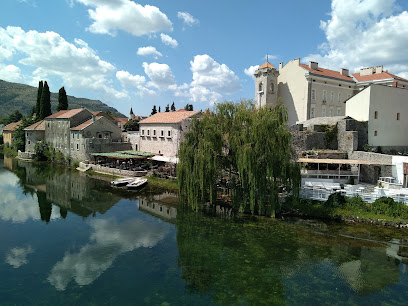
Cancello
Discover Cancello in Trebinje, where delicious pizza and barbecue await to tantalize your taste buds in a cozy setting.
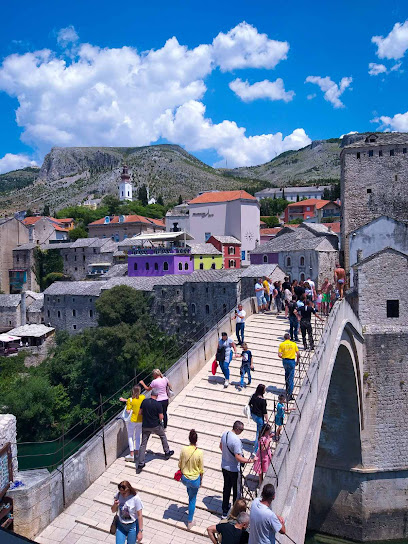
Tropic market 12
Discover Trebinje's vibrant flavors and local specialties at Tropic Market 12, a must-visit supermarket for every traveler.

Unmissable attractions to see
Porto Montenegro
Experience luxury and leisure at Porto Montenegro, a premier marina destination with stunning views, upscale dining, and vibrant shopping in beautiful Tivat.

Dubrovnik Cable Car
Experience breathtaking panoramic views from the Dubrovnik Cable Car, a thrilling ascent revealing the beauty of Croatia's historic city and coastline.

Fort Lovrijenac
Explore the rich history and breathtaking views at Fort Lovrijenac, Dubrovnik's iconic fortress overlooking the Adriatic Sea.

Kampana Tower
Discover the majestic Kampana Tower in Kotor, Montenegro – a historic landmark offering breathtaking views and a glimpse into the city's rich past.

Hercegovačka Gračanica Temple
Experience the divine beauty of Hercegovačka Gračanica Temple in Trebinje, a stunning Orthodox church with breathtaking views and rich cultural significance.
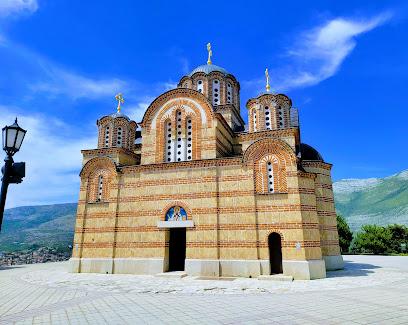
The Cathedral of the Assumption of the Virgin Mary
Discover the architectural beauty and historical significance of the Cathedral of the Assumption of the Virgin Mary in Dubrovnik, a must-see UNESCO World Heritage site.

Ferry Kamenari
Experience the breathtaking views of Montenegro's coastline with the scenic Ferry Kamenari, a must-visit for every traveler exploring the Bay of Kotor.

Dubrovnik Walking Tours
Immerse yourself in the history and beauty of Big Onofrio's Fountain, a captivating landmark in Dubrovnik's Old Town, perfect for relaxation and photos.

Trsteno Arboretum
Explore the Trsteno Arboretum, where nature and history intertwine in a breathtaking botanical garden overlooking the Adriatic Sea.

Grad Sunca - Water and Dino park
Dive into fun at Grad Sunca, Trebinje's premier water park featuring thrilling slides, dinosaur attractions, and a vibrant family-friendly atmosphere.

Dubrovnik Walks
Explore Dubrovnik's stunning beauty and rich history with personalized tours from Dubrovnik Walks, perfect for every adventure seeker.

Pasjača Beach
Discover the enchanting beauty of Pasjača Beach, a hidden paradise in Popovići, perfect for sun seekers and nature lovers alike.

Žanjic Beach
Discover the serene beauty of Zanjic Beach in Mirišta, Montenegro, a perfect blend of relaxation and adventure on the stunning Adriatic coast.

Rector's Palace
Discover the rich history of Dubrovnik at the Rector's Palace, an architectural gem and museum showcasing the city's fascinating past.

Saint Tryphon's Cathedral
Explore the timeless beauty of Saint Tryphon's Cathedral, a historical gem in Kotor, Montenegro, reflecting centuries of culture and stunning architecture.

Essential places to dine
Hotel Studenac
Discover the perfect blend of exquisite dining and luxurious accommodations at Hotel Studenac in Trebinje.

Konak Motel
Discover the flavors of Bosnia at Konak Motel - A traditional restaurant and cozy hotel nestled in scenic Trebinje.

Market 99
Experience authentic Bosnian cuisine at Market 99 in Trebinje – where flavor meets tradition in a cozy setting.

Tarana
Experience exquisite dining at Tarana in Trebinje - where local flavors meet culinary artistry in a welcoming atmosphere.

Restoran KOLO
Discover authentic Bosnian cuisine at Restoran KOLO in Trebinje—where tradition meets modern culinary art.

Stara Hercegovina
Experience authentic Bosnian cuisine at Stara Hercegovina in Tuli, where every dish tells a story of rich culinary traditions.

Ресторан Огњиште / Restoran Ognjište
Discover authentic Balkan flavors at Restoran Ognjište in Trebinje—your go-to spot for traditional meals and warm hospitality.

Vinarija Vukoje
Discover authentic Bosnian cuisine and exquisite local wines at Vinarija Vukoje in Trebinje.

Restoran Kukurića Vrtovi
Discover authentic Bosnian flavors at Restoran Kukurića Vrtovi in Trebinje - where culinary excellence meets stunning views.
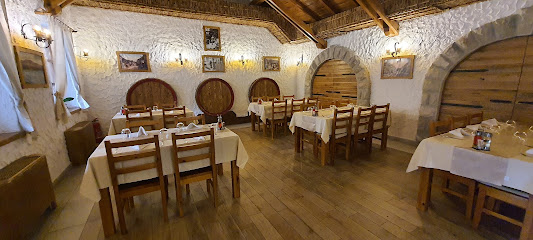
Dučić’s View
Experience exquisite local cuisine and stunning views at Dučić’s View in Trebinje – a true gem for every traveler.

Ресторан Рас Требиње
Experience authentic Bosnian cuisine at Restaurant Ras in Trebinje - where tradition meets taste in every bite.

Grad Sunca - Etno Konoba
Discover authentic Balkan cuisine at Grad Sunca - Etno Konoba in Dražin Do, where family-friendly dining meets rich cultural heritage.

Hotel & Restaurant SESTO SENSO
Discover the perfect blend of comfort and culinary excellence at Hotel & Restaurant SESTO SENSO in Trebinje.

Restoran MG
Discover authentic Bosnian cuisine at Restoran MG in Trebinje - a culinary gem serving delightful dishes in a cozy atmosphere.

Hotel Nar
Experience the best of Trebinje at Hotel Nar - where exceptional dining meets cozy accommodation amidst stunning landscapes.

Markets, malls and hidden boutiques
Bingo Mall
Experience the lively shopping scene at Bingo Mall in Trebinje, where local culture meets modern retail for a unique experience.
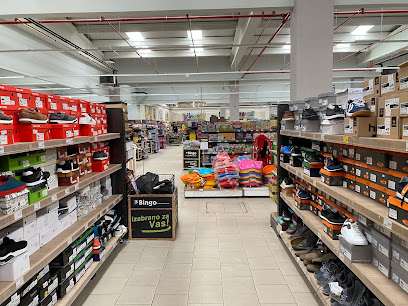
Tropic market 12
Discover the vibrant local flavors at Tropic Market 12 in Trebinje, a supermarket that offers a blend of local and international products.

Tropic centar
Immerse yourself in Trebinje's vibrant shopping scene at Tropic Centar, where retail, dining, and entertainment converge for an unforgettable experience.

Тропик маркет / Tropic market
Discover local flavors and unique souvenirs at Tropic Market, Trebinje's vibrant supermarket offering the best of Bosnian culinary traditions.

Konzum
Discover the flavors of Trebinje at Konzum, your ultimate supermarket for local and international products.
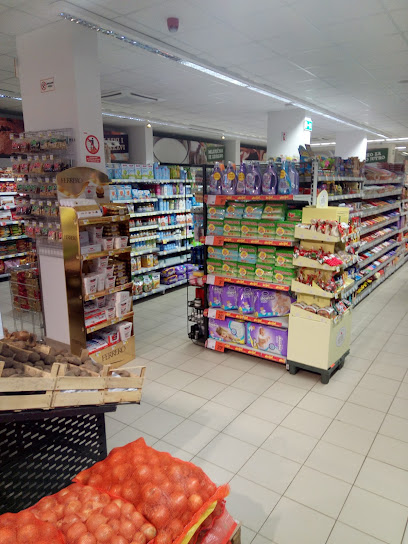
Market Best
Discover the flavors and goods of Trebinje at Market Best, a premier supermarket offering local products and fresh produce.

Be Cool American Outlet
Discover unbeatable deals and unique finds at Be Cool American Outlet in Trebinje, where style meets incredible value.

Tropic market
Explore the vibrant Tropic Market in Trebinje, where fresh local produce meets authentic Bosnian flavors in a bustling grocery experience.

Next
Experience the essence of Trebinje at this charming cafe, where delicious pastries and aromatic coffee await in a cozy ambiance.
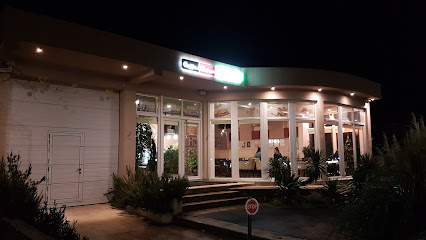
Azel France
Explore Azel France in Trebinje for unique fashion finds at unbeatable prices, perfect for every traveler looking to refresh their style.
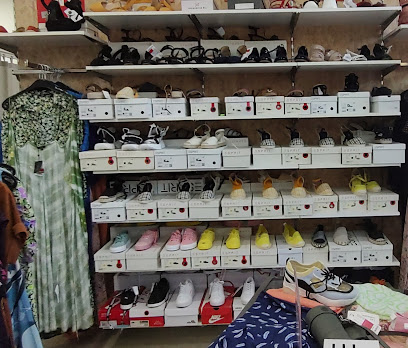
Hercegovačka Kuća
Discover the flavors of Herzegovina at Hercegovačka Kuća, Trebinje's premier organic food store offering fresh, local produce and artisanal products.

sinsay
Explore trendy fashion and affordable clothing at Sinsay in Trebinje, where style meets accessibility for every traveler.

Tehno Market, Krunić Commerce d.o.o.
Explore cutting-edge technology and electronics at Tehno Market in Trebinje, your one-stop destination for all things tech.

Tržni centar
Discover the heart of Trebinje's shopping scene at Tržni Centar, where local charm meets modern retail and dining experiences.

Color Studio
Discover Color Studio in Trebinje, where quality building materials meet expert advice in a welcoming atmosphere.

Essential bars & hidden hideouts
Vinarija Vukoje
Vinarija Vukoje in Trebinje: A wine bar offering exquisite local wines and delicious cuisine in a charming atmosphere.

Underground
Explore Underground in Trebinje for live music, vibrant nightlife, and an unforgettable rock music experience in a cozy bar atmosphere.

Azzaro
Experience the vibrant atmosphere of Azzaro in Trebinje, where delicious drinks and local culture come together in a picturesque setting.

Botanik Coffee & More
Experience the delightful ambiance of Botanik Coffee & More in Trebinje, where exceptional coffee, cocktails, and ice cream await you.

Bottega Wine&Tapas Bar
Experience the flavors of Trebinje at Bottega Wine & Tapas Bar, where authentic tapas and exquisite wines come together in a charming setting.

Dublin Pub
Discover Dublin Pub in Trebinje for an authentic blend of local culture, delightful drinks, and vibrant live music that brings the night to life.

White bar
Experience the vibrant nightlife and delicious cocktails at White Bar in Trebinje, the ideal spot for tourists to unwind and socialize.

Sport kafe TrebinjeSport
Immerse yourself in the excitement of live sports at Sport Kafe TrebinjeSport, where delicious food meets an electric atmosphere in Trebinje.

Sin bar & caffe
Discover the lively ambiance and delightful flavors at Sin Bar & Caffe in Trebinje, a perfect blend of a bar and cafe experience.

MOZZART bar
Discover the ultimate sports bar experience at MOZZART Bar in Trebinje, where excitement, great drinks, and live sports come together.

Gazdinstvo Todorović
Experience the enchanting flavors of Trebinje at Gazdinstvo Todorović, a charming wine bar surrounded by breathtaking landscapes.

Malibu Beach
Discover the beauty of Malibu Beach, where the Adriatic Sea meets serene sands, offering relaxation, adventure, and cultural richness.

Caffe AMOR
Experience the cozy charm of Caffe AMOR in Trebinje, where delightful drinks and local ambiance come together for an unforgettable visit.

Kafe Veslački klub Trebinje
Discover the charm of Kafe Veslački klub Trebinje, where stunning river views meet a cozy bar atmosphere perfect for relaxation.

Brooklyn sandvich bar
Discover the Brooklyn Sandvich Bar in Trebinje - where delicious sandwiches meet a vibrant atmosphere.

Local Phrases
-
- HelloZdravo
[Zdrah-voh] - GoodbyeDoviđenja
[Doh-vee-jen-ya] - YesDa
[Dah] - NoNe
[Neh] - Please/You're welcomeMolim
[Moh-leem] - Thank youHvala
[Hvah-lah] - Excuse me/SorryIzvinite
[Eez-vee-nee-teh] - How are you?Kako si?
[Kah-koh see?] - Fine. And you?Dobro. A ti?
[Doh-bro. Ah tee?] - Do you speak English?Govorite li engleski?
[Goh-voh-ree-teh lee ehn-gleh-skee?] - I don't understandNe razumijem
[Neh rah-zoo-mee-yem]
- HelloZdravo
-
- I'd like to see the menu, pleaseMolim vas, želio bih vidjeti meni
[Moh-leem vahs, zheh-lee-oh bee veed-yeh-tee meh-nee] - I don't eat meatJa ne jedem meso
[Yah neh yeh-dem meh-so] - Cheers!Živjeli!
[Zhee-vyeh-lee!] - I would like to pay, pleaseŽelim platiti, molim
[Zheh-leem plah-tee-tee, moh-leem]
- I'd like to see the menu, pleaseMolim vas, želio bih vidjeti meni
-
- Help!Pomoć!
[Poh-mohch!] - Go away!Otiđi!
[Oht-ee-jdee!] - Call the Police!Pozovite policiju!
[Poh-zoh-vee-teh poh-lee-tsee-yoo!] - Call a doctor!Pozovite doktora!
[Poh-zoh-vee-teh dohk-toh-rah!] - I'm lostIzgubio/la sam se
[Eez-goo-byoh/lah sahm seh] - I'm illBolestan/na sam
[Boh-leh-stahn/nah sahm]
- Help!Pomoć!
-
- I'd like to buy...Želim kupiti...
[Zheh-leem koo-pee-tee...] - I'm just lookingSamo gledam
[Sah-moh gleh-dahm] - How much is it?Koliko košta?
[Koh-lee-koh koh-shta?] - That's too expensiveTo je previše skupo
[Toh yeh preh-vee-sheh skoo-poh] - Can you lower the price?Možete li spustiti cijenu?
[Moh-zheh-teh lee spoos-tee-tee tsee-yeh-noo?]
- I'd like to buy...Želim kupiti...
-
- What time is it?Koliko je sati?
[Koh-lee-koh yeh sah-tee?] - It's one o'clockJedan je sat
[Yeh-dahn yeh saht] - Half past (10)Pola (deset)
[Poh-lah (deh-set)] - MorningJutro
[Yoo-troh] - AfternoonPopodne
[Poh-pohd-neh] - EveningVeče
[Veh-cheh] - YesterdayJuče
[Yoo-cheh] - TodayDanas
[Dah-nahs] - TomorrowSutra
[Soo-trah] - 1jedan
[yeh-dahn] - 2dva
[dvah] - 3tri
[tree] - 4četiri
[cheh-tee-ree] - 5pet
[peht] - 6šest
[shehst] - 7sedam
[seh-dahm] - 8osam
[oh-sahm] - 9devet
[deh-veht] - 10deset
[deh-set]
- What time is it?Koliko je sati?
-
- Where's a/the...?Gdje je...?
[Gdyeh yeh...?] - What's the address?Koja je adresa?
[Koh-yah yeh ah-dreh-sah?] - Can you show me (on the map)?Možete li mi pokazati (na karti)?
[Moh-zheh-teh lee mee poh-kah-zah-tee (nah kahr-tee)?] - When's the next (bus)?Kada je sljedeći (autobus)?
[Kah-dah yeh sleh-deh-chee (ow-toh-boos)?] - A ticket (to ....)Jednu kartu (do ...)
[Yeh-dnoo kahr-too (doh ...)]
- Where's a/the...?Gdje je...?
History of Trebinje
-
Trebinje's history dates back to ancient times, with evidence of Illyrian tribes inhabiting the region. The area was later influenced by the Greeks and Romans, who left their mark through various archaeological remains, including roads and fortifications.
-
During the medieval period, Trebinje was part of the Serbian Kingdom. The city witnessed the construction of significant structures, such as the Hercegovačka Gračanica Monastery, which stands as a testament to the period's architectural and cultural development.
-
In the 15th century, Trebinje fell under Ottoman rule. This era profoundly influenced the city's architecture and culture, introducing elements like the Osman-Pasha Mosque and the Trebisnjica River Arslanagic Bridge. These structures highlight the blend of Islamic and local styles.
-
The late 19th century brought Trebinje under Austro-Hungarian control. This period saw modernization efforts, including the construction of new buildings and infrastructure improvements. The influence of European architectural styles is evident in the city's layout and structures from this era.
-
During World War II, Trebinje experienced significant turmoil. Post-war, it became part of the Socialist Federal Republic of Yugoslavia. This era brought industrial development and urban expansion, shaping much of the modern city's landscape.
-
The 1990s Bosnian War deeply affected Trebinje, leading to significant destruction and displacement. Following the war, Trebinje became part of the independent country of Bosnia and Herzegovina. The city has since focused on rebuilding and preserving its rich cultural heritage.
-
Trebinje is renowned for its vibrant cultural scene, with numerous festivals celebrating its diverse heritage. Events like the Trebinje Summer Festival and the Petar Kočić Gathering highlight the city's commitment to preserving and promoting its historical and cultural traditions.
Trebinje Essentials
-
Trebinje is located in the southern part of Bosnia and Herzegovina, near the border with Montenegro. The nearest international airport is Dubrovnik Airport in Croatia, approximately 40 kilometers away. From Dubrovnik, you can take a taxi or a bus directly to Trebinje. Alternatively, you can fly into Sarajevo International Airport, which is about 200 kilometers away. From Sarajevo, you can take a bus or rent a car to reach Trebinje. The journey from Sarajevo typically takes around 4 hours by road.
-
Trebinje is a relatively small city, and many attractions are within walking distance. For longer trips, taxis are readily available and reasonably priced. Additionally, local buses operate within the city and connect to nearby villages. Renting a car is also a convenient option for exploring the scenic surrounding areas at your own pace.
-
The official currency in Bosnia and Herzegovina is the Convertible Mark (BAM). Credit cards are accepted in most hotels, restaurants, and larger shops, but it is advisable to carry cash, especially for smaller establishments and markets. ATMs are widely available in Trebinje, making it easy to withdraw cash as needed.
-
Trebinje is generally a safe destination for tourists. However, as with any travel destination, it is important to take standard precautions. Avoid walking alone at night in unfamiliar areas and keep an eye on your belongings in crowded places. While there are no specific high-crime areas targeting tourists, staying vigilant and aware of your surroundings is always a good idea.
-
In case of emergency, dial 112 for immediate assistance. Trebinje has a local police station and medical facilities available. It is recommended to have travel insurance that covers medical emergencies. For minor health issues, there are several pharmacies in the city where you can purchase over-the-counter medications.
-
Fashion: Do dress modestly, especially when visiting religious sites. Avoid wearing overly revealing clothing. Religion: Do respect local customs and traditions. When visiting churches or monasteries, dress conservatively and cover your head if required. Public Transport: Do be respectful and give up your seat to elderly passengers. Don’t eat or drink on public transport. Greetings: Do greet people with a handshake or a slight bow of the head as a sign of respect. Eating & Drinking: Do try local delicacies and accept food offerings graciously. Don’t refuse hospitality, as it is considered impolite.
-
To experience Trebinje like a local, visit the local markets where you can buy fresh produce and traditional Bosnian goods. Engage with locals, as they are often friendly and willing to share stories about the city's history and culture. Don’t miss visiting the historic Arslanagić Bridge and the Hercegovačka Gračanica, a beautiful Serbian Orthodox monastery. For a unique experience, take a stroll along the Trebišnjica River and enjoy the local cafes and restaurants that line its banks.
Trending Landmark in Trebinje
Nearby Cities to Trebinje
-
Things To Do in Dubrovnik
-
Things To Do in Herceg Novi
-
Things To Do in Perast
-
Things To Do in Tivat
-
Things To Do in Kotor
-
Things To Do in Nikšić
-
Things To Do in Cetinje
-
Things To Do in Budva
-
Things To Do in Podgorica
-
Things To Do in Mostar
-
Things To Do in Bar
-
Things To Do in Ulcinj
-
Things To Do in Makarska
-
Things To Do in Sarajevo
-
Things To Do in Bajram Curri










